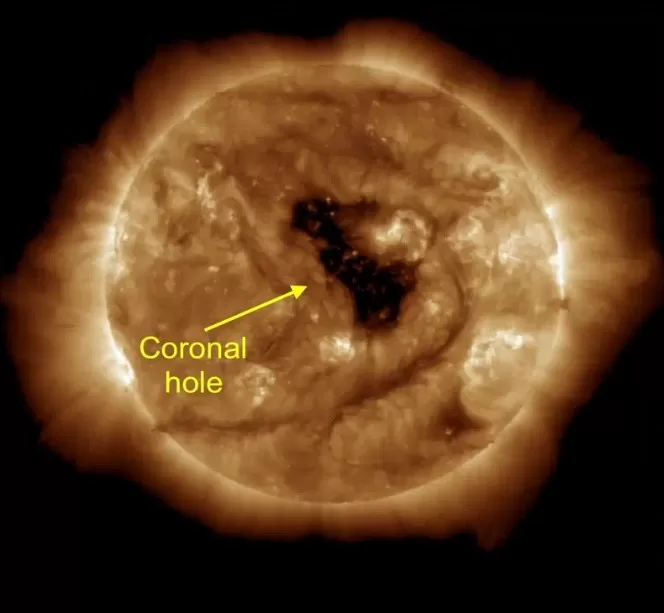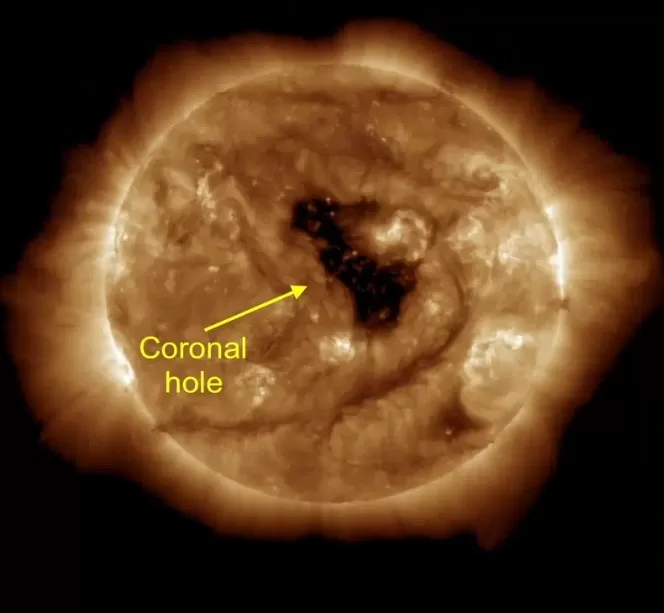Astronomers have reported the appearance of a large coronal hole on the Sun's surface, currently pointed directly toward Earth. It is located in the so-called geoeffective position—that is, in the zone from which solar plasma streams are most likely to impact our planet. The solar wind stream is predicted to reach Earth as early as October 11 and could cause moderate disturbances in the magnetic field.

As EarthSky notes, a previous coronal mass ejection (CME) arrived near Earth on October 8, briefly disrupting the magnetic field but failing to generate even a weak storm (level G1). The new outburst from the large coronal hole could be more noticeable.
Solar activity remains generally low—seven weak C- and B-class flares were recorded over the past 24 hours, the most powerful of which was a C1.7. No flares of higher M or X classes were observed.
Scientists explain that large coronal holes most often appear just before the peak of the 11-year solar activity cycle. Plasma streams emanating from them can cause auroras, short-term magnetospheric disturbances, and slight interference with satellites and communications systems.
Experts warn that magnetic fluctuations that may occur on October 11–12 could affect the well-being of weather-sensitive people, causing headaches, fatigue, irritability, or pressure changes.
However, no serious magnetic storms are currently predicted: the Earth's magnetic field will remain within the range of moderate activity and will not pose a threat to technical systems.
According to EarthSky, the geomagnetic situation will be calm on October 9-10, but a short-term increase in activity is possible from October 11 due to the solar wind flow from a large coronal hole.
